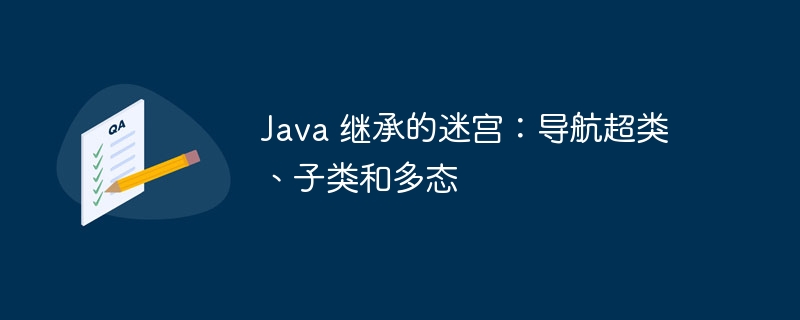
在 Java 继承中,超类(父类)是通用类,定义了对象的行为和属性,而子类(派生类)从超类继承并扩展其功能。子类可以使用超类的非私有成员,并可以覆写超类的方法。
多态:
多态性允许一个对象的行为根据其实际类型而变化。在 Java 中,子类对象可以被分配给超类对象,当调用超类方法时,实际执行的方法取决于对象的实际类型。
多态的优点:
- 代码重用:超类可以定义通用行为,多个子类可以复用。
- 可扩展性:很容易添加新子类,而无需修改超类。
- 松散耦合:客户端代码只需与超类交互,而无需知道对象的实际类型。
多态的挑战:
- 类型擦除:编译后,子类类型的信息会消失,导致在运行时无法区分不同的子类。
- 方法覆写:子类可以覆写超类的方法,如果不小心,可能会破坏父类行为。
- 安全违规:如果子类对象的实际类型与分配给超类对象的类型不同,可能会导致安全问题。
最佳实践:
- 明确定义继承关系:明确指定子类从哪个超类继承。
- 谨慎覆写方法:仔细考虑覆写超类方法的后果。
- 使用抽象类和接口:抽象类和接口可以提供更灵活和安全的继承。
- 进行单元测试:确保多态行为在所有情况下都能正常工作。
常见误解:
- 多态不是继承:多态是基于继承,但不是继承本身。
- 子类总是比超类更好:子类不一定是比超类更好的选择。
- 多态可以解决所有问题:多态是一项强大的工具,但它不能解决所有软件设计问题。
示例:
考虑以下示例:
class Shape {
protected String name;
public void draw() {
System.out.println("Drawing a shape");
}
}
class Rectangle extends Shape {
public void draw() {
super.draw();
System.out.println("Drawing a rectangle");
}
}
class Circle extends Shape {
public void draw() {
super.draw();
System.out.println("Drawing a circle");
}
}
public class Main {
public static void main(String[] args) {
Shape s1 = new Rectangle();
Shape s2 = new Circle();
s1.draw(); // Prints "Drawing a rectangle"
s2.draw(); // Prints "Drawing a circle"
}
}
在这个示例中,Shape 是超类,定义了通用行为和属性。Rectangle 和 Circle 是从 Shape 继承的子类,它们扩展了 Shape 的行为。main 方法创建两个 Shape 对象,一个分配给 Rectangle,另一个分配给 Circle。当调用 draw() 方法时,执行的实际方法取决于对象的实际类型,展示了多态性。




